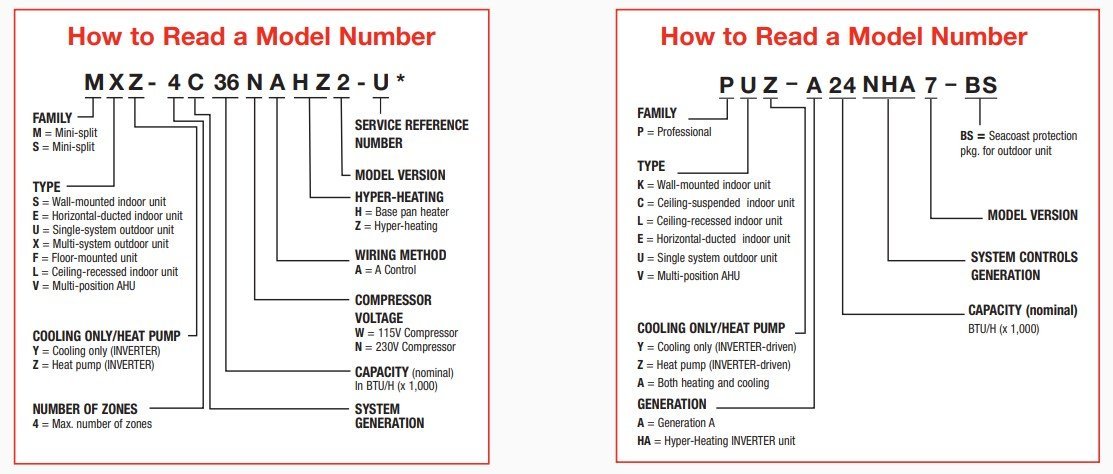Get Tech Tips
Subscribe to free tech tips.
UV Lights

A quick note about UV lights: they work like sunlight in that they prevent and kill many types of bacteria and fungi when exposed to the light on surfaces. They do not generally do a great job of killing spores suspended in the air stream.
UV lights are great at killing yucky stuff on surfaces like coils, blower wheel, and panels. They won't “kill” everything in the airstream, and they don't capture anything.
Also, be careful about what the UV is allowed to shine on. It will deteriorate most wire insulation and can deteriorate and discolor many other plastics.
Finally, don't look at a UV light for any amount of time. I once spent a very uncomfortable day in bed after damaging my eyes from looking at UV indirectly for only a few minutes.
UV can be great, but it's not a fix-all. Always be careful as to where the light is going.
—Bryan










Comments
Thanks for that bit. I have some coils that have mold on them this might help.
Thanks for that bit. I have some coils that have mold on them this might help.
https://bestiptvservice.vip
https://bestiptvservice.vip
pharmacie en ligne avec ordonnance pharmacie en ligne france livraison internationale or pharmacie en ligne sans ordonnance
http://3dpowertools.com/cgi-bin/animations.cgi?Animation=8&ReturnURL=http://pharmafst.com acheter mГ©dicament en ligne sans ordonnance
[url=https://www.google.co.kr/url?sa=t&url=https://pharmafst.com]pharmacie en ligne livraison europe[/url] pharmacie en ligne avec ordonnance and [url=https://domod.click/home.php?mod=space&uid=75885]Pharmacie sans ordonnance[/url] vente de mГ©dicament en ligne
pharmacie en ligne avec ordonnance pharmacie en ligne france livraison internationale or pharmacie en ligne sans ordonnance
http://3dpowertools.com/cgi-bin/animations.cgi?Animation=8&ReturnURL=http://pharmafst.com acheter mГ©dicament en ligne sans ordonnance
[url=https://www.google.co.kr/url?sa=t&url=https://pharmafst.com]pharmacie en ligne livraison europe[/url] pharmacie en ligne avec ordonnance and [url=https://domod.click/home.php?mod=space&uid=75885]Pharmacie sans ordonnance[/url] vente de mГ©dicament en ligne
https://kamagraprix.shop/# kamagra en ligne
https://kamagraprix.shop/# kamagra en ligne
Cialis sans ordonnance pas cher [url=https://tadalmed.shop/#]Cialis sans ordonnance 24h[/url] Achat Cialis en ligne fiable tadalmed.com
Cialis sans ordonnance pas cher [url=https://tadalmed.shop/#]Cialis sans ordonnance 24h[/url] Achat Cialis en ligne fiable tadalmed.com
kamagra oral jelly Acheter Kamagra site fiable or Achetez vos kamagra medicaments
https://www.google.com.mt/url?q=https://kamagraprix.shop kamagra 100mg prix
[url=https://maps.google.com.ua/url?sa=t&url=https://kamagraprix.shop]Achetez vos kamagra medicaments[/url] Kamagra pharmacie en ligne and [url=http://www.9kuan9.com/home.php?mod=space&uid=3105606]Kamagra Oral Jelly pas cher[/url] kamagra oral jelly
kamagra oral jelly Acheter Kamagra site fiable or Achetez vos kamagra medicaments
https://www.google.com.mt/url?q=https://kamagraprix.shop kamagra 100mg prix
[url=https://maps.google.com.ua/url?sa=t&url=https://kamagraprix.shop]Achetez vos kamagra medicaments[/url] Kamagra pharmacie en ligne and [url=http://www.9kuan9.com/home.php?mod=space&uid=3105606]Kamagra Oral Jelly pas cher[/url] kamagra oral jelly
Kamagra Oral Jelly pas cher Kamagra pharmacie en ligne or achat kamagra
http://familie-huettler.de/link.php?link=kamagraprix.com/ acheter kamagra site fiable
[url=https://anolink.com/?link=https://kamagraprix.com]kamagra livraison 24h[/url] kamagra en ligne and [url=https://forum.beloader.com/home.php?mod=space&uid=1747464]acheter kamagra site fiable[/url] kamagra en ligne
Kamagra Oral Jelly pas cher Kamagra pharmacie en ligne or achat kamagra
http://familie-huettler.de/link.php?link=kamagraprix.com/ acheter kamagra site fiable
[url=https://anolink.com/?link=https://kamagraprix.com]kamagra livraison 24h[/url] kamagra en ligne and [url=https://forum.beloader.com/home.php?mod=space&uid=1747464]acheter kamagra site fiable[/url] kamagra en ligne
Acheter Kamagra site fiable: kamagra livraison 24h – Achetez vos kamagra medicaments
Acheter Kamagra site fiable: kamagra livraison 24h – Achetez vos kamagra medicaments
pharmacie en ligne france pas cher: pharmacie en ligne – Pharmacie Internationale en ligne pharmafst.com
pharmacie en ligne france pas cher: pharmacie en ligne – Pharmacie Internationale en ligne pharmafst.com
olympe casino: casino olympe – olympe casino
olympe casino: casino olympe – olympe casino
This is all correct. To add a couple of things. If the UV lights are mounted in such a way that the light hits carpet, it will bleach it.
As for what it does or doesn’t kill, that is important. Also important is what do you do after the lights “kill” the “bugs” – are they safer dead or alive? Depends on what it is. You should follow this up with good filtration to capture what you killed. That of course opens a whole other conversation on filtration and the effect if has on static duct pressure.
This is all correct. To add a couple of things. If the UV lights are mounted in such a way that the light hits carpet, it will bleach it.
As for what it does or doesn’t kill, that is important. Also important is what do you do after the lights “kill” the “bugs” – are they safer dead or alive? Depends on what it is. You should follow this up with good filtration to capture what you killed. That of course opens a whole other conversation on filtration and the effect if has on static duct pressure.
pharmacie en ligne france livraison internationale: pharmacie en ligne sans ordonnance – pharmacies en ligne certifiГ©es pharmafst.com
pharmacie en ligne france livraison internationale: pharmacie en ligne sans ordonnance – pharmacies en ligne certifiГ©es pharmafst.com
To leave a comment, you need to log in.
Log In